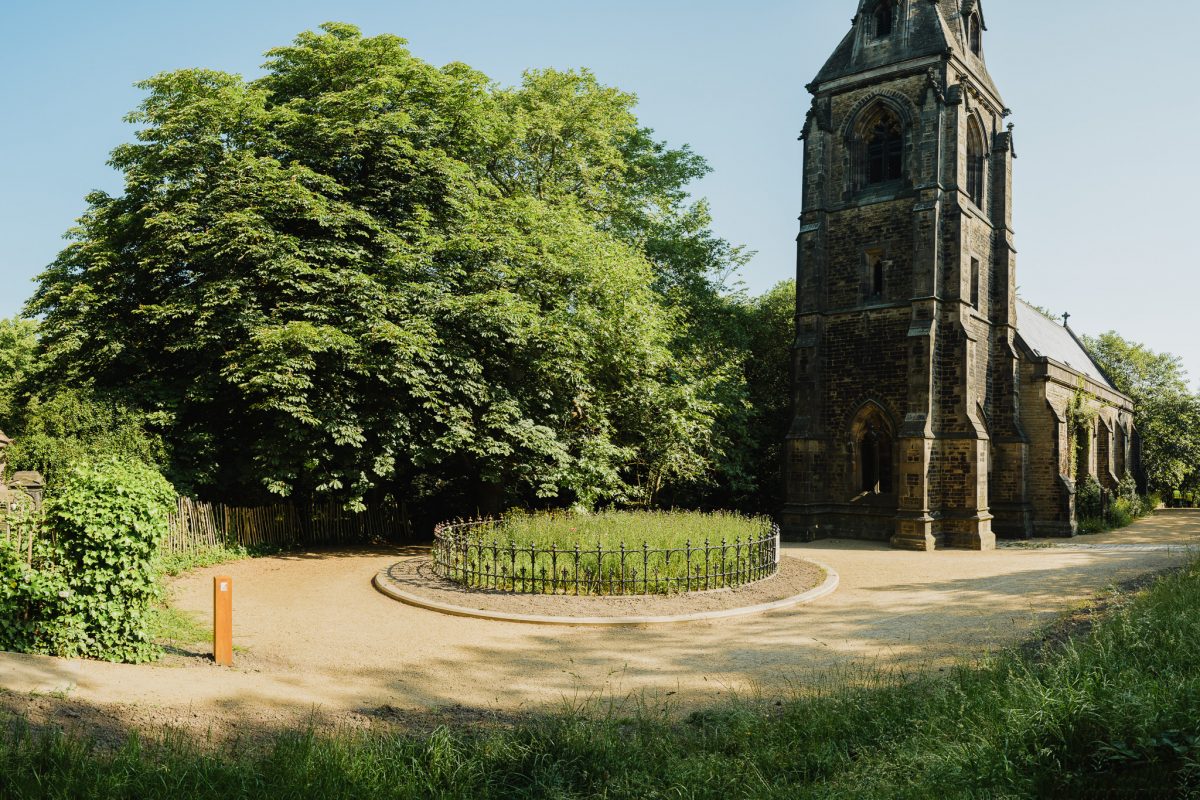In the mid-1840s, the Cemetery Company, in a bid to encourage members of the Established Church to use the Cemetery, bought a new area of land to the east of the original site. They commissioned William Flockton, a well-regarded local architect, to develop the site and Robert Marnock to produce a planting plan. Flockton’s plan included an Anglican Chapel (Grade II listed).
Design
The Anglican Chapel’s Neo-Gothic style completely contrasted with Samuel Worth’s Neo-Classical Nonconformist Chapel. It was constructed using two different sandstones. Its cornerstones were cut from millstone grit. The main walls were constructed using local coal measures sandstone. The spire of the Chapel at 37m high was disproportionately large in relation to the rest of the building and would have been seen from anywhere in the town.
The first stone of the Chapel was laid by the Reverend Dr Sutton, Vicar of Sheffield, on 8 May 1848. The ground was consecrated by his Grace the Archbishop of York on 27 June 1850 during a service at which a special hymn was sung, composed by the poet James Montgomery (1771-1854).

Inside, the Chapel was quite plain: stone flag floors, bare walls, simple pine bench seating and a table at the front upon which sat candlesticks. A carpet runner ran down the aisle between the seating areas. Outside, the area in front, the rotunda, was used for the burial of James Montgomery in 1854 and a statue of him was erected over his grave. This, with his remains, was removed to Sheffield Cathedral in the 1970s when the Cemetery was overgrown and prone to vandalism.

Cost
At a cost of £25,000 the new area was expensive (£2.4 million today and almost twice the cost of the original phase) and exceeded calculations. But the Company acknowledged that what Flockton achieved was exceptional. They saw the cost as justified given the increase in income it would produce and the improvement it gave to the overall landscape.
World War Two
On the night of the Sheffield Blitz, 12 December 1940, a bomb fell in Cemetery Road. It damaged the east end of the Chapel, the boundary wall, and several memorials. The Anglican Chapel has since lay derelict for many years.
The Anglican Chapel is now in private ownership.



